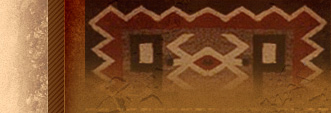 |
 |
| |
Burning Through the Roots, Part 4
|
|
| |
The Northern Great Plains has been experiencing serious drought for a number of years now, but the year after we moved, 2005, there was a temporary let-up. Heavy snow that spring followed by a wet summer created an oasis in the chain of dry years, one to which the trees responded with eager earnestness. By the following year, 2006, the ponderosa pines were heavy with fat, ripening cones dripping resin as the air temperature climbed to 113° F. It doesn't usually get that hot where there are pine trees. When the heat boiled up thunderheads and the hot air grew still in the storm shadows, you'd swear you could hear the pine sap hissing away into vapor. The offgassing volatiles smelled like turpentine in the narrows where the road wound down through the canyon's upper reaches. Harsh voices of crows cracked the silence. Thunder followed. Its echoes tumbled through the canyon like footsteps over the cellar of a vast empty house.
On July 23 I dreamed: I looked out my window and saw tall flames among the pine trees at the east end of the slope above the ranch buildings. I saw their branches on fire, all along the edge of the high fence bordering the horse pasture. I called the fire department for help to evacuate the horses so they wouldn't burn up. But the person on the phone told me there was no one to help us, that everyone was out on the fire line. "There are three fires burning at once," she said. "We are spread too thin to do anything but fight them."
On July 25 it rained -- a delicate, fitful, capricious shower that whirled through the canyon and wetted the ranch buildings while lightning struck elsewhere, far away. We thought maybe the worst would be over then, that the storms were maturing enough to make rain instead of just lightning, that the heat would blow its own self out at last.
July 27 we went to the post office in town. Halfway there, we looked east across the upper canyon and saw a thick column of black smoke boiling into the sky. I would not have thought it possible to drive my old truck on a dirt road at the speed I drove then. We slid into town on a run of gravel to find the bay doors of the volunteer fire department gaping open, the building empty. So we tore off east down the two-lane highway to find out if the fire was really as close to our buffalo pasture as it seemed to be. When the road crested a low rise, the breaks of the White River to our north came into view and, simultaneously, the distant hills of Chadron 60 miles away. There were fires in both places, in addition to the one we'd already seen. Here were "the three fires at once" of my dream, and I knew it meant we needed to get our horses out right away.
But a simultaneous realization, much stronger and more immediate, overwhelmed the one about our horses' danger. It literally brought me screeching to a halt in the middle of the road. For the first thing I saw when we crested that rise was that the separate columns of new smoke were, absolutely and without doubt, the tornado funnels I'd seen in the pivotal dream that sent us north to begin with -- exactly the same size, color, and spatial arrangement. I just hadn't known that wildfire smoke could look like that, so I'd mistaken it for tornadoes. But the moment I recognized what I'd seen in the dream, I realized the consequence of my mistake: we hadn't been called north to escape whatever the "tornadoes" represented in the dream, but to witness them -- to witness the fires.
|
|
|
|
|
|
 |
|
|

